A frequent offensive coach-ism is that the running game is a quarterback’s best friend. Of course that’s true, but we all know, there will be a time when the result of the game will be placed squarely on the quarterback’s shoulders.
Developing a young quarterback is one of the coach’s most complex tasks. The pressure mounts with every snap, but behind the scenes, some of the game’s most innovative minds are designing playbooks and game plans that give quarterbacks a fighting chance—regardless of their experience. TJ DiMuzio, Andrew Dresner, Joe Davis, and Dan Gonzalez shared their experiences in creating “QB-friendly” concepts, the strategies designed to simplify the game for young signal-callers and build their confidence in real-time.
These aren’t just X’s and O’s—they’re lifelines for young quarterbacks who need to adapt to the speed, complexity, and decision-making that comes with the territory. Here’s how these coaches make the position a little easier, one play at a time.

1. Confidence Starts With Completions – TJ DiMuzio
For TJ DiMuzio, Lafayette University’s offensive coordinator, everything starts with a simple philosophy: completions breed confidence. If you want to develop a young quarterback, you don’t overwhelm him with deep throws or intricate reads right out of the gate. You keep it simple.
“We always say, ‘completions for confidence,’” DiMuzio explains. His approach? Get the quarterback in rhythm with short, high-percentage throws like a hitch. These aren’t flashy plays, but they’re effective. The idea is to let the QB experience success early in the game—small, consistent wins that build trust in himself and the offense.
“Why put everything on a young guy’s plate when you don’t need to?” DiMuzio adds. Minimizing cognitive load is key. Instead of bombarding the QB with multiple reads or complex pre-snap decisions, DiMuzio focuses on giving him one or two quick, clear reads. It’s a strategy that reduces pressure and lets the quarterback play faster(TJ Dimuzio – QB Friendy…).
2. Simplifying the Playbook – Andrew Dresner
Andrew Dresner, offensive coordinator at Holy Cross, has seen firsthand how simplifying reads can lead to success. Working with an 18-year-old QB, Dresner discovered the magic of consistency. Rather than introducing a new read for every passing concept, he developed a system where multiple plays shared the same read progression for the quarterback.
“Relating five different pass concepts to one simple read for the QB was a game-changer,” Dresner recalls. By keeping the playbook tight and building in repetition, his quarterback began to execute at a higher level. The fewer decisions the quarterback had to make, the quicker he could play(Andrew Drewsner – Must …).
Dresner also prioritizes protecting the quarterback by using sound but straightforward protections. It’s not about throwing the kitchen sink at a young QB; it’s about teaching him the essentials and letting him thrive in a controlled environment. He also loves incorporating simple zone-read concepts into the offense—plays where the quarterback can pull the ball on inside zone and pick up a few yards. Those short, positive gains can be massive confidence boosters(Andrew Drewsner – Must …).
3. Dividing the Field – Joe Davis
At Western Illinois, head coach Joe Davis takes a no-nonsense approach when it comes to getting his quarterbacks comfortable. “Nothing is easy in college football anymore,” he says, acknowledging the ever-evolving defenses that coaches face weekly. But that doesn’t stop him from trying to simplify the game for his quarterbacks.
For Davis, one of the best ways to make life easier for a QB is by dividing the field in half. “It’s the old adage: If you try to see everything, you end up seeing nothing,” Davis says. By giving the QB a half-field or access read, he removes some of the overwhelming pre-snap pressure. “We’re looking for quick-game footwork or rhythm throws,” he explains. The goal is to keep the quarterback out of dangerous situations where he’s forced to take multiple hitches against a fast pass rush(Joe Davis – Easy Comple…).
Davis is also a big fan of moving the pocket. Getting the quarterback outside the tackles not only helps neutralize a fierce pass rush, but it also lets the QB see the field more clearly and make easier decisions. The less he has to worry about complex protection adjustments early in the game, the better(Joe Davis – Easy Comple…).
4. Simple Quarterback Reads – Dan Gonzalez
Dan Gonzalez, a coaching consultant and former high school and college coach, specializes in breaking the game down into digestible chunks for young quarterbacks. At the core of his philosophy is simplifying how QBs read the defense, helping them make quicker decisions and deliver the ball efficiently. His focus on simple reads ensures that quarterbacks aren’t bogged down by unnecessary complexity.
Gonzalez’s approach begins with concepts like the Scan Read, where the quarterback’s decision-making process is made easier by having two crossing routes converge in his field of vision. The idea is simple: give the QB two clear, immediate options, and let him decide based on what he sees. The crossing routes not only help manipulate the defense but also provide the QB with easy throws in rhythm, keeping the offense moving(SCAN Read.mp4).
In addition to the Scan Read, Gonzalez uses a method called the Ram Read, where the quarterback is taught to read away from the middle linebacker (Mike). This simplifies the decision-making process by dividing the field into manageable sections. The quarterback knows to attack the side opposite the linebacker’s rotation, ensuring a high-percentage throw on every drop-back. “We’re giving him a two-on-one advantage,” Gonzalez says, explaining how the Ram Read simplifies the thought process while increasing the odds of success(Ram Read.mp4)(SCAN Read.mp4).
Both concepts—Scan Read and Ram Read—are designed to help quarterbacks process information faster and get the ball out of their hands with confidence. Gonzalez’s methods thin-slice the defense, offering clarity to quarterbacks and eliminating the hesitation that can lead to mistakes. These simple reads are the quarterback’s best friend, allowing them to react rather than overthink.
Sound Coaching Decisions Are a Quarterback’s Best Friend
At the end of the day, a quarterback’s success isn’t just about arm talent or athleticism. It’s about how coaches position them to succeed. As these offensive minds have demonstrated, sound coaching decisions and strategic play-calling are the real MVPs when it comes to young quarterbacks thriving under pressure.
From DiMuzio’s completions for confidence to Gonzalez’s simple quarterback reads, each coach has a different method, but the goal remains the same: reduce complexity and build confidence. The less a quarterback has to think, the faster and more effectively they can play. Simple, high-percentage plays that limit reads and pre-snap responsibilities are key in allowing young QBs to flourish.
Joe Davis’ focus on dividing the field and moving the pocket, combined with Andrew Dresner’s strategy of streamlining reads across multiple concepts, emphasizes the importance of putting QBs in positions where they can react rather than process too much. These decisions, made by the coaches long before the ball is snapped, provide quarterbacks with the comfort and confidence needed to make big plays.
Ultimately, great coaching is about knowing when to take things off the quarterback’s plate, not just piling on. With clear decision-making processes and simple reads, quarterbacks can focus on execution—getting the ball out on time, hitting their targets, and, most importantly, winning games.
A quarterback’s best friend? It’s the coach who makes the right call.
Bonus: QB-Friendly Concepts in Action
To bring these strategies to life, we’ve gathered some of the best examples shared by coaches in their video breakdowns. Below are some specific concepts, demonstrated through real-game footage and practice scenarios, to help you implement these QB-friendly ideas into your own playbook.
Joe Davis – Man Side-Zone Side Concepts
Is the defense playing man or is it playing zone? The quarterback is not tasked with changing a play to one that better suits beating man coverage or zone coverage. He simply needs to work the side that accomplishes the task. Joe Davis explains it in this video:
TJ DiMuzio – This or That Concepts
When defenses are great at disguising, a quarterback will have to rely on a key defender to know where he will go with the ball. That’s the basis for TJ DiMuzio’s “This or That” concepts. He explains how they use a single side one-on-one with a boot away in this video:
Andrew Dresner – Option Routes
One way to create completions is to design a way for the quarterback to be right on every throw. The option route can help accomplish that, and it is one of Holy Cross Offensive Coordinator Andrew Dresner’s “must haves” in the game plan. He shows a option route concept in this video:
Dan Gonzalez – Scan Reads
Having a quarterback scan into routes that are working into is vision is an effective way to allow him to see defenders in the windows he is looking to throw into. Dan Gonzalez breaks it down here:
Dan Gonzalez – RAM Read
The RAM Read is a simple read for even the most experienced quarterback. Where is the Mike moving to? Throw away from the Mike. He explains the RAM Read and how the concepts are set up here:
These concepts illustrate some ways you can create Quarterback Friendly plays within your offense.


